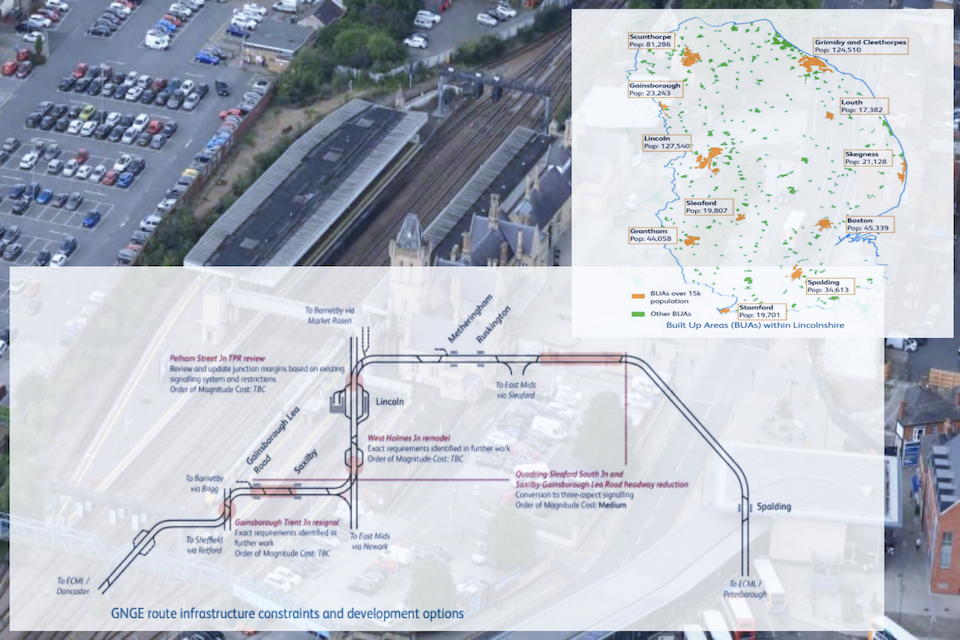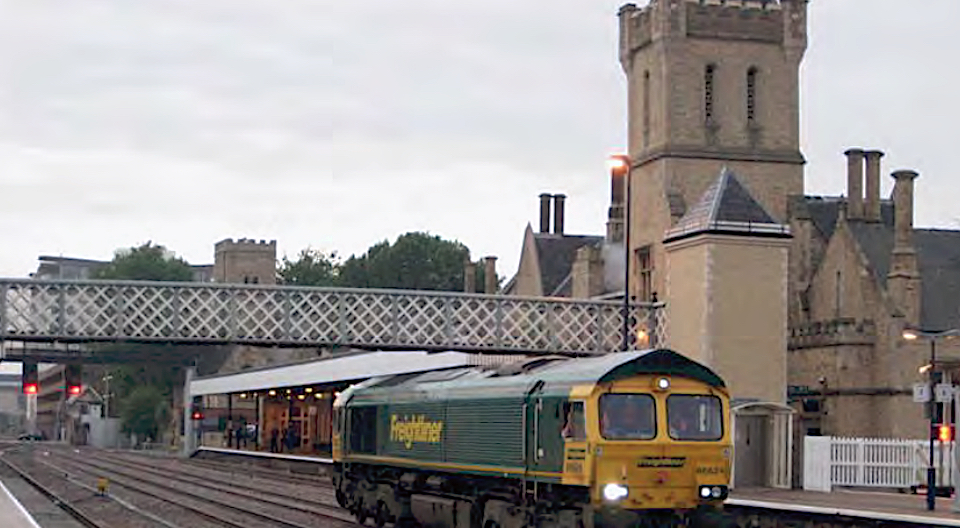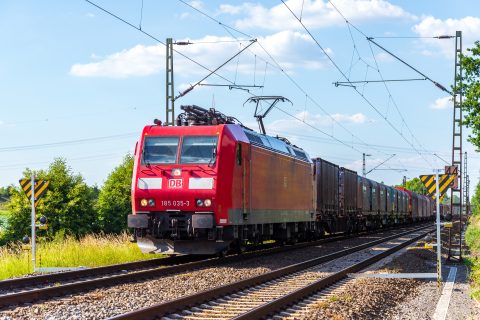Freight figures highly in UK Network Rail plans for Lincolnshire

Network Rail has published a long-term strategic advice study for the Lincolnshire area. The study focuses on the region’s main line, which parallels the busy East Coast Main Line. The route is of particular significance to the rail freight sector. Much of Network Rail’s document concentrates on better provision for existing demand. It also touches on the development of new flows to cater for future traffic. The biggest capital investment proposal is, unsurprisingly, a comprehensive electrification programme.
The spine of the regional network is the Great Northern and Great Eastern (GNGE). The line is sometimes called the Cathedrals Route because of the several settlements dominated by such grand places of worship. The line is predicted to play an increasingly vital role in moving the country’s goods and produce. According to the new study from Network Rail (NR), the railway across Lincolnshire is of strategic significance. The infrastructure agency says it provides vital social and economic benefits through its passenger services. It also handles nationally significant flows of freight. Network Rail wants to see the route developed. It recognises that the GNGE line forms a vital rail freight artery.
Modal shift within the agri-business sector
The report places a significant emphasis on freight capacity improvements. NR particularly notes the Werrington dive-under near Peterborough, allowing freight services to access the line more easily and avoiding the capacity-limited East Coast Main Line. Network Rail’s Lincolnshire Strategic Advice study has identified freight traffic as the catalyst behind improving the provisions for passenger traffic in what is generally a lightly populated region of England. “On some corridors, the network is less intensively used for passenger services than other parts of the national network and serves generally dispersed flows across a sparsely populated geography,” says Network Rail. “There is significant opportunity for growth in freight across Lincolnshire given the major logistics sites in the north of the county at Immingham and surrounding area, as well as potential for modal shift to rail within the agri-business sector as part of Lincolnshire’s ‘UK Food Valley’ strategy.”

The advice document, intended to stimulate informed debate about existing challenges, future enhancements and primary opportunities for rail, identifies three key areas for freight enhancement. In the first instance, the infrastructure agency says that the region and the network would benefit from additional capacity and routing options for established freight flows to and from the south Humber. They single out the port of Immingham, which, following post-Brexit changes in international trade patterns, is seeing something of a resurgence. Network Rail says that could be down to changes in the regulatory environment, such as the granting of Freeport status, which was won on the back of having rail freight infrastructure already installed.
Freight could revive lightly used passenger stations
Freight is an important part of the existing rail network in Lincolnshire. According to the study, it is likely to grow further in importance. That may well be driven by local growth potential in rail freight-using industries and long-term forecasts for high growth in freight nationally. Mentioning rail freight in the context of the East of England inevitably draws thoughts of the overarching impact of the port of Felixstowe. Network Rail wants to see an uplift in capacity and routing options for cross-Lincolnshire freight flows. They say that would cater for long-term demand in national flows, notably southwards to London and rail terminals across the north of England.

Most radically, and potentially fostering new flows for rail freight, Network Rail states its support for potential new rail terminals across Lincolnshire, which could be used by the agri-business sector. In contrast to the rash of multimodal terminals being promoted around the UK, the infrastructure agency says this would specifically encourage modal shift from road to rail in this sector. Perhaps not the farm and harvest-specific sidings of old, but the potential does exist for a modern form of rail express logistics to step into the agri-business at what NR admits are many lightly used passenger stations in the region.
Considering the broader economy of Lincolnshire
Uplifting capacity and infrastructure enhancement, especially the top prize of electrification, would require significant funding. However, Network Rail’s study shows that the Great Northern and Great Eastern main line is in good shape for wiring up. Not least, the line is double-tracked throughout, having avoided waves of rationalisation. “This would incur costs for promoters and funders but could help achieve strategic objectives”, say NR. “Meeting multi-modal expectations and reducing end-to-end journey time, connecting places to markets, directly investing in skills, innovation and digital infrastructure, crowding-in foreign investment and facilitating housebuilding and the place making agenda, [while] contributing to long-term economic growth in areas in support of levelling up [with the economic performance of the South East of England],” are all there for the taking, says the study.
This report also considers how the broader economic characteristics of Lincolnshire, including its role in food production, the Humber Freeport, and the potential for a carbon “Geological Disposal Facility” on the east coast of England, provide investment opportunities. Network Rail say they would welcome ongoing engagement with local and regional stakeholders to further explore the feasibility of their aspirations for Lincolnshire.





